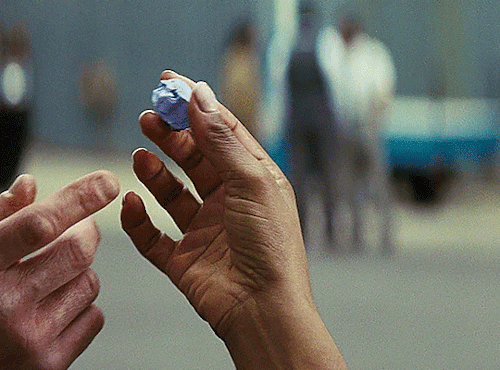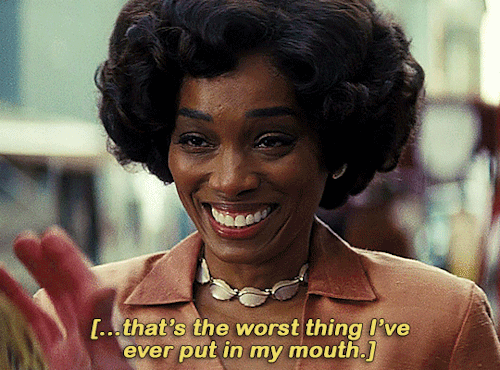They Set My World On Fire

They set my world on fire
More Posts from Thewalkinglamppost and Others
We are in the south... suffering from famine‼️, save us🙏
Hello, I'm Wasim from Gaza, specifically from Al-Mawasi in the south of the Strip...
We are suffering from famine, there is no food other than flour and its price is 300$... It is very expensive, we cannot afford it...
I struggle every day in crowded queues to get bread to feed my family.😞💔

Help me and donate to me to buy flour for my family and satisfy their hunger.🙏
I'm nothing without you. You are my last hope.🫂😞😭
.
.
Link campaign ⬇️
✅️Vetted by @gazavetters, my number verified on the list is ( #290 )✅️

@heritageposts @gazavetters @palestin @palestine @gaza





DEAD POETS SOCIETY (1989) dir. Peter Weir

listening to the tales of a 200 year old man
охуительные стори от деда










— It's not grape, it's lavender. — Well, if you like the taste of lavender, why not just drink a bottle of perfume?
Some analysis about Steve.
English is not my native language and I cannot guarantee that I am professional
Attachment Theory
Developed by John Bowlby and Mary Ainsworth, attachment theory posits that early relationships with caregivers shape an individual's emotional bonds and sense of security (Bowlby, 1969). Caregivers, typically the mother or primary caretaker, provide psychological safety, enabling infants or children to confidently explore the world and return for comfort and support when needed. During this period, the mother serves as the child's primary "secure base," a primal instinct that persists into later life, extending to friends and loved ones in adulthood.
In Captain America, Steve Rogers' pre-serum life is depicted as frail, socially marginalized, and frequently bullied. His childhood friend, Bucky Barnes, emerges as Steve’s primary attachment figure, offering protection and affirmation. Scenes of Bucky shielding Steve from bullies and encouraging his resilience establish Bucky as a "secure base," a reliable source of safety that fosters exploration and resilience (Ainsworth, 1989). These early interactions cultivate a relatively secure attachment in Steve, characterized by trust and emotional reliance on Bucky. Notably, the model suggests early experiences shape enduring expectations of caregiver reliability.
Steve’s attachment deepens through shared trauma during World War II. In *Captain America: The First Avenger*, Bucky’s capture by Hydra and Steve’s rescue mission at Azzano solidify their mutual dependence. Bucky’s fall from the train, presumed fatal, triggers Steve’s grief response, aligning with Bowlby’s concept of "separation distress," where the loss of an attachment figure disrupts emotional equilibrium.
Steve’s initial reaction to Bucky’s fall—staring in disbelief at the spot where he vanished, later drinking alone in a bombed-out bar—signals acute separation distress, a hallmark of attachment loss (Bowlby, 1969). Bowlby’s theory outlines grief stages following attachment loss in childhood: protest, despair, and detachment. Steve’s protest phase manifests in his refusal to fully accept Bucky’s death, telling Peggy Carter, “I should’ve grabbed him” (Johnston & Markus, 2011), reflecting guilt and a desire to undo the loss. The despair phase is evident in his withdrawal and self-sacrificial act of crashing the Valkyrie into the Arctic, suggesting Bucky’s absence diminished Steve’s sense of purpose. Unlike typical detachment, Steve’s grief is interrupted by 70 years of cryogenic preservation, leaving him in an unresolved state of loss, later manifesting as chronic grief.
Steve’s subsequent self-sacrifice—crashing the Valkyrie—reflects an internalization of Bucky’s absence, as Steve’s identity is deeply tied to their shared past. In *Captain America: The Winter Soldier*, discovering Bucky alive but brainwashed reignites this attachment. Steve’s refusal to fight Bucky on the helicarrier, stating, “I’m with you to the end of the line,” reveals an enduring attachment bond, driven in part by a desire to restore the security Bucky once provided.
Erik Erikson’s theory of "identity formation" further explains Steve’s attachment. Erikson posits that identity develops through relationships and social experiences, particularly during crises. Steve’s pre-serum identity as a “little guy from Brooklyn” is inseparable from Bucky’s support. In Erikson’s eight-stage theory, the fifth stage (adolescence, ages 12–18) is critical, with the core conflict being *Identity vs. Role Confusion*. In *Civil War*, Steve’s defense of Bucky against Tony Stark and global authorities reflects an identity crisis: abandoning Bucky would betray the self that Bucky helped shape. Thus, Steve’s attachment is not only emotional but existential, anchoring his sense of continuity in a disorienting post-war world.
Existentialism
From an existentialist perspective, Steve’s attachment to Bucky aligns with Jean-Paul Sartre’s concept of authenticity, which involves embracing the freedom and responsibility to define oneself (Sartre, 1943). Steve views Bucky as a touchstone for his authentic self—the Brooklyn kid fighting for justice, not America’s icon. In *The Winter Soldier*, despite Bucky’s transformation into the Winter Soldier, Steve recognizes him, reflecting a refusal to accept the “nothingness” of Bucky’s lost identity. Sartre’s notion of “existence precedes essence” asserts that humans first exist and then define their essence through choices and actions. Steve believes Bucky’s essence—his goodness—persists beneath Hydra’s conditioning, driving his actions. This is evident when Steve drops his shield, choosing vulnerability over combat to reach Bucky’s buried self.
Steve’s persistence also resonates with Martin Heidegger’s “being-toward-death,” which suggests confronting mortality sharpens one’s purpose (Heidegger, 1927). Bucky’s death and Steve’s near-death experiences (the Valkyrie crash, the helicarrier battle) bind them in a shared existential outlook. For Steve, Bucky represents a living link to a past intertwined with death and meaning. In *Civil War*, Steve’s fracturing of the Avengers to protect Bucky underscores this existential commitment, viewing Bucky not as a threat but as a symbol of life and values worth preserving.
Phenomenology
Maurice Merleau-Ponty’s phenomenology, emphasizing intersubjectivity and embodied perception, illuminates how Steve’s perception of Bucky shapes their bond (Merleau-Ponty, 1945). Steve’s view of Bucky is rooted in their shared lifeworld—a pre-war Brooklyn defined by loyalty and mutual care. In *The Winter Soldier*, Steve gazes at the masked Winter Soldier and pleads, “You know me,” an act of phenomenological recognition. Merleau-Ponty posits that the self is constituted through the presence of others: “I am not in front of my body, I am in it, or rather I am it.” The self emerges through interactions with others’ gazes, words, and actions. Steve’s embodied memories of Bucky—their shared past—override the Winter Soldier’s programming, evident in Bucky’s hesitation to kill him.
In Civil War, Steve and Bucky’s reunion in Bucharest further embodies this intersubjective dynamic. Despite global accusations, Steve refuses to see Bucky as a weapon, reflecting a phenomenological affirmation of Bucky’s living humanity. Their physical cooperation against authorities embodies a pre-reflective trust, what Merleau-Ponty describes as the fundamental “coexistence” of human connection. Thus, Steve’s attachment is not abstract but visceral, grounded in the bodily and emotional reality of their shared past.
“Phenomenological identity” refers to an understanding of identity from a phenomenological perspective, distinct from traditional psychological or sociological categorizations (e.g., gender or cultural identity). It focuses on how one experiences and confirms “I am me” through lived interactions with the world and others. For example, identifying as “a little guy from Brooklyn” is not a mere label but emerges through how Steve treats others, how they respond, and how he feels “this is me” in those interactions. For Merleau-Ponty, the body is the medium of world interaction, and relationships are rooted in shared bodily practices. For Steve and Bucky, their pre-war Brooklyn life and wartime camaraderie—marked by physical gestures like Bucky’s arm around Steve’s shoulder, fighting side by side, and trusting glances—are disrupted by Bucky’s fall, leaving Steve with an inner void.
In The First Avenger, Steve clutches a glass of liquor in a bar, unable to get drunk due to his super-soldier metabolism, embodying this loss. His enhanced body, unable to save Bucky, amplifies the pain of separation (Merleau-Ponty, 1945). This phenomenological trauma persists into *The Winter Soldier*. Steve’s body—running, punching bags until they burst—externalizes his inner pain, a futile attempt to reclaim the intersubjective rhythm shared with Bucky. Merleau-Ponty’s concept of “intercorporeality”—the co-constitution of selves through bodily presence—explains the significance of Steve’s reunion with Bucky. Seeing Bucky alive, even as the Winter Soldier, reawakens Steve’s embodied memories, expressed in his desperate plea, “You know me” (Wadlow & Markus, 2014). Thus, separation distress is not abstract but a disruption of Steve’s bodily being-in-the-world, a longing for the tactile and perceptual presence Bucky once provided.

Lucy and ghoul sketch
-
 queerspren liked this · 1 month ago
queerspren liked this · 1 month ago -
 666thtoolofhell reblogged this · 1 month ago
666thtoolofhell reblogged this · 1 month ago -
 cerebrumbrainstemandcerebellum liked this · 1 month ago
cerebrumbrainstemandcerebellum liked this · 1 month ago -
 themagentacolor liked this · 2 months ago
themagentacolor liked this · 2 months ago -
 supernovasage-fromstarstodust liked this · 2 months ago
supernovasage-fromstarstodust liked this · 2 months ago -
 ghouly2077 liked this · 4 months ago
ghouly2077 liked this · 4 months ago -
 evilsweetheart reblogged this · 4 months ago
evilsweetheart reblogged this · 4 months ago -
 evilsweetheart liked this · 4 months ago
evilsweetheart liked this · 4 months ago -
 ghoulcybrainrothaver reblogged this · 4 months ago
ghoulcybrainrothaver reblogged this · 4 months ago -
 cerromoreno liked this · 5 months ago
cerromoreno liked this · 5 months ago -
 writingthy liked this · 5 months ago
writingthy liked this · 5 months ago -
 whiletalkingtomyself liked this · 6 months ago
whiletalkingtomyself liked this · 6 months ago -
 everybodyisundercover liked this · 6 months ago
everybodyisundercover liked this · 6 months ago -
 retroagehysteria liked this · 7 months ago
retroagehysteria liked this · 7 months ago -
 bratty-battie liked this · 7 months ago
bratty-battie liked this · 7 months ago -
 the-bad-ass-wolf reblogged this · 8 months ago
the-bad-ass-wolf reblogged this · 8 months ago -
 briarlily reblogged this · 8 months ago
briarlily reblogged this · 8 months ago -
 captainandor reblogged this · 8 months ago
captainandor reblogged this · 8 months ago -
 confirmedcozy liked this · 8 months ago
confirmedcozy liked this · 8 months ago -
 randomrat666 liked this · 8 months ago
randomrat666 liked this · 8 months ago -
 princess-grecia liked this · 9 months ago
princess-grecia liked this · 9 months ago -
 xcelxlinax003 liked this · 9 months ago
xcelxlinax003 liked this · 9 months ago -
 booksandladybugs liked this · 9 months ago
booksandladybugs liked this · 9 months ago -
 krrchatuu liked this · 9 months ago
krrchatuu liked this · 9 months ago -
 oc4everything liked this · 10 months ago
oc4everything liked this · 10 months ago -
 clearcrusadecowboy900 liked this · 10 months ago
clearcrusadecowboy900 liked this · 10 months ago -
 dark-springg liked this · 10 months ago
dark-springg liked this · 10 months ago -
 thetzar reblogged this · 10 months ago
thetzar reblogged this · 10 months ago -
 springtoy liked this · 10 months ago
springtoy liked this · 10 months ago -
 dullahanya liked this · 10 months ago
dullahanya liked this · 10 months ago -
 malotovmonk liked this · 10 months ago
malotovmonk liked this · 10 months ago -
 amorremanet reblogged this · 10 months ago
amorremanet reblogged this · 10 months ago -
 fujin-san liked this · 10 months ago
fujin-san liked this · 10 months ago -
 nonagenarios liked this · 10 months ago
nonagenarios liked this · 10 months ago -
 whateverfiction liked this · 11 months ago
whateverfiction liked this · 11 months ago -
 durashkovna liked this · 11 months ago
durashkovna liked this · 11 months ago -
 aliray3421 liked this · 11 months ago
aliray3421 liked this · 11 months ago -
 ggfitzwilliam liked this · 11 months ago
ggfitzwilliam liked this · 11 months ago -
 jennifersmind liked this · 11 months ago
jennifersmind liked this · 11 months ago -
 tumbleweed-chaser liked this · 11 months ago
tumbleweed-chaser liked this · 11 months ago -
 kasta56 liked this · 11 months ago
kasta56 liked this · 11 months ago -
 munchonbrows liked this · 11 months ago
munchonbrows liked this · 11 months ago -
 maul-of-shame liked this · 11 months ago
maul-of-shame liked this · 11 months ago -
 proximio-5 liked this · 11 months ago
proximio-5 liked this · 11 months ago -
 operasanna liked this · 11 months ago
operasanna liked this · 11 months ago -
 littlemissmoodswings liked this · 11 months ago
littlemissmoodswings liked this · 11 months ago -
 bitumz liked this · 11 months ago
bitumz liked this · 11 months ago -
 starlitflora reblogged this · 11 months ago
starlitflora reblogged this · 11 months ago

Ash|24|Taurus🥀Slowly rotting, decaying, and coming back to life all over again🥀|Artist|
229 posts





